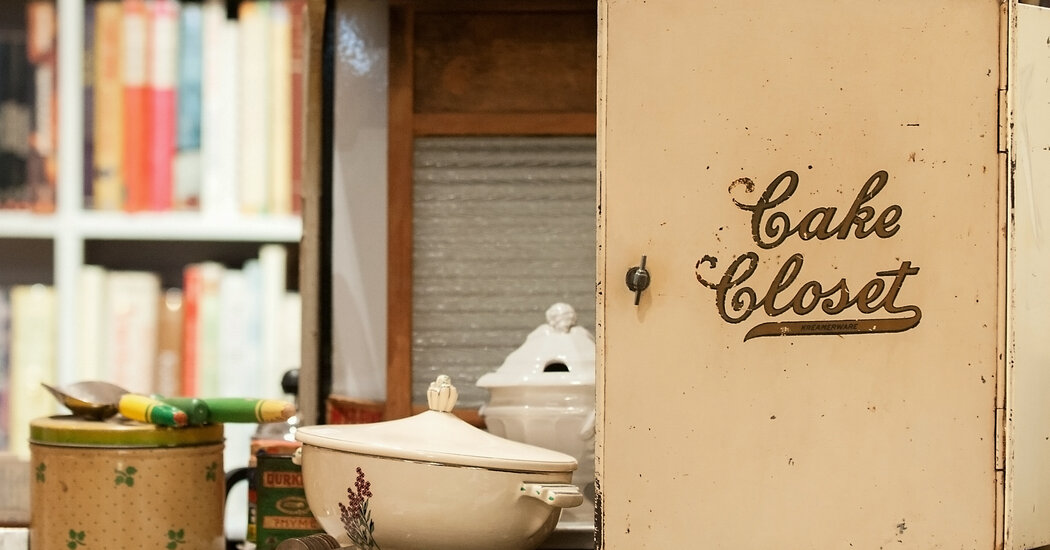Dear readers,
The other evening I picked up Mason Currey’s always-diverting “Daily Rituals,” which recounts the habits of creative people through the ages. In the section devoted to Francis Bacon, between the disciplined mornings of painting and the long, wine-soaked days and nights that followed, I ran across this sentence: “Bacon depended on pills to get to sleep, and he would read and reread classic cookbooks to relax himself before bed.”
Bacon knew his stuff! Cookbooks — with their reassuring mix of precision and imagination, comfort and possibility — can engage the restless mind better than almost anything else. Just ask Barbara Pym, or at any rate the protagonist of her novel “Excellent Women” who likewise reaches for “cookery and devotional books, the most comfortable bedside reading.”
Unlike Bacon, I prefer some narrative with my recipes. A few that live on my bedside table have traveled with me since I started bringing books to camp: Edna Lewis’s “The Taste of Country Cooking,” Richard Olney’s “The French Menu Cookbook” and a community spiral-bound from my grandmother’s hoard. But here are a couple of others that have been helping me lately.
—Sadie
Despite years of trying, I have never warmed to Colwin’s fiction. But her food essays, many originally written for Gourmet, are among my favorite pieces of writing, especially this first collection. I found it on my mom’s bookshelf when I was about 9. I read “Repulsive Dinners: A Memoir” and I remember wondering that a writer existed who could be so funny, so voicey, so humane and so unapologetically eccentric. (I probably didn’t use those words; I did devour the book, and then started reading her subsequent columns avidly.)
Colwin’s work is comforting, yes, but it’s also incredibly stylish, and holds up with the best food writing. An incidental pleasure of her essays is that she is an enthusiastic reader of others: it’s from her books that I first learned about Ismail Merchant’s “Indian Cuisine,” John Thorne’s “Simple Cooking,” Jane Grigson’s “Good Things” and Father Robert Farrar Capon’s “The Supper of the Lamb.” Her recipes are the subject of some debate — and certainly they’re idiosyncratic — but I have had unambiguous success with “Creamed Spinach With Jalapeno Peppers,” from her essay “The Same Old Thing,” and her basic gingerbread.
Read if you like: Laurie Colwin’s fiction or even if you don’t; Nora Ephron’s “Heartburn”; gingerbread; unintimidating (but opinionated) kitchen friends.
Available from: Ideally, a great cookbook store: Kitchen Arts & Letters, Bonnie Slotnick Cookbooks, Books for Cooks.
This is a memoir, but so rich with food and the pleasures of cooking and eating that it deserves a place here. The Pakistani American chef came to public attention with turns on “Chopped” and “Top Chef.” The book deals with that, and with her coming of-age and development as a chef implementing her family’s traditions in the haute cuisine space. But it’s much more: In 2017, Ali was diagnosed with Ewing sarcoma and worked on this book shortly before she died, at only 29. (Her co-writer, Tarajia Morrell, completed the book posthumously.) Yet it’s not depressing. Ali’s love of family, home and travel — and, yes, the mouthwatering descriptions of food throughout — render it something sui generis. A love letter, with recipes.
While reading “Savor,” I could not help thinking of the lovely “Unforgettable,” a biography of Paula Wolfert that became a chronicle of her dementia, beautifully written by Emily Kaiser Thelin. Both of these, in their different ways, would qualify for either of Barbara Pym’s bedside criteria: They are cookery and devotional books.
Read if you like: “The River of Consciousness,” by Oliver Sacks; “Top Chef”; “Stay True,” by Hua Hsu.
Available from: Cookbook stores, again. Try Omnivore, Bold Fork Books or Book Larder.
Why don’t you …
-
Walk off that meal? A food audiobook may not sound like much fun, but I can only say that I have walked 20 blocks out of my way to finish the chapter on corn from Margaret Visser’s “Much Depends on Dinner: The Extraordinary History and Mythology, Allure and Obsessions, Perils and Taboos of an Ordinary Meal.” Originally published in 1986 (and bearing something of a cult following) this culinary-social history breaks the book into courses and in the process tells us, Brillat-Savarin-style, who we are. Of course you can find a used copy — and should! — but the audio brings out the book’s unexpected, sly humor.
-
Go weird? May I suggest “The Tasha Tudor Family Cookbook?” Yes, there are corgis. No, the “Corgi Cottage Soup” does not, in fact, contain corgis. (It does contain a can of baked beans and a whole batch of mashed potatoes, however.)
-
Give yourself pink nightmares? Have I got a book for you!
Thank you for being a subscriber
Plunge further into books at The New York Times or our reading recommendations.
If you’re enjoying what you’re reading, please consider recommending it to others. They can sign up here. Browse all of our subscriber-only newsletters here.
Friendly reminder: check your local library for books! Many libraries allow you to reserve copies online.


